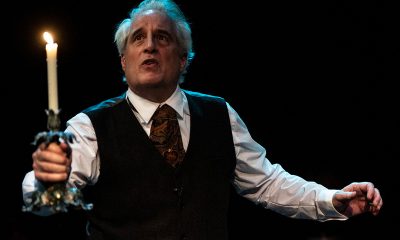Arts & Entertainment
STAYCATION: Step back in time
Washington region rich with historical sites
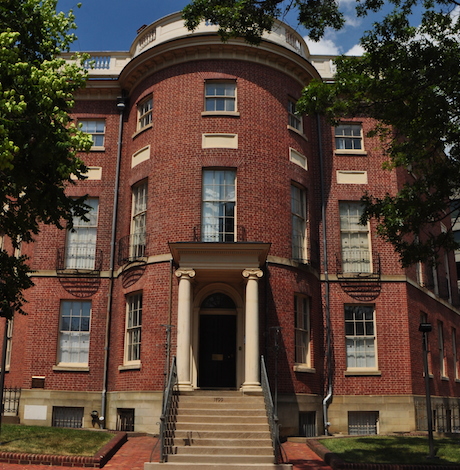
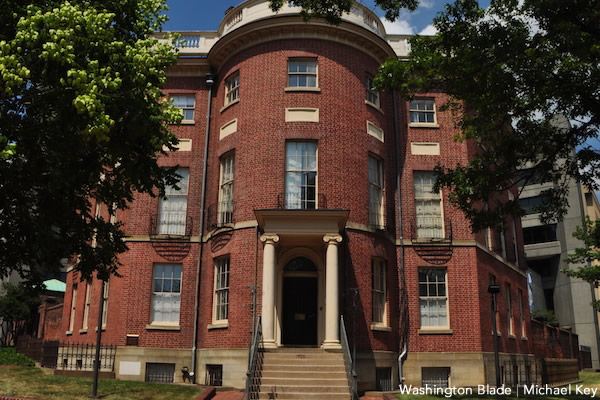
The Octagon House was the former residence of President James Madison during the War of 1812. (Washington Blade photo by Michael Key)
D.C. boasts a burgeoning music, arts and nightlife scene for all generations to step back in time. But the city is also known for its rich history, spanning nearly three centuries. This summer, visit some of the District’s most colorful and time-tested landmarks.
Start at the Congressional Cemetery (1801 E St., S.E.) along the Anacostia River, open every day from dawn to dusk for tourists. There’s also a popular dog-walking club but there’s a waiting list to join. Call ahead and schedule a visit to the 30-acre cemetery, established in 1807 and named a National Historic Landmark in 2011. When you get there, scout out the tombstones of J. Edgar Hoover, the first director of the FBI long rumored to be gay, and Leonard Matlovich, the first gay soldier to publicly out himself in protest of the military’s ban on gay members. For more information, visit congressionalcemetery.org
If you live in the area, chances are you’ve already visited Arlington Cemetery. But this time, make sure you take a tour of the Arlington House (321 Sherman Dr., Fort Myer, Va.), the former residence of Robert E. Lee, commander of the Confederate Army during the Civil War. Schedule some time to tour the house, built by slaves between 1802 and 1818, as well as the flower garden and the slave quarters on the plantation grounds. For more information, visit nps.gov.
If one Civil War-themed outing isn’t enough, head to Ford’s Theatre (511 10th St., N.W.), the site of former President Abraham Lincoln’s assassination shortly after the conclusion of the war. Book tickets in advance for “One Destiny,” a 35-minute reconstruction of the sequences of events the night Lincoln was shot, showing at various times this summer. Walk across the street to the Petersen House, which showcases Lincoln’s deathbed. For details about show times and museum hours, visit fords.org.
For a step even further back in time, visit the Octagon House (1799 New York Ave., N.W.) the temporary residence of President James Madison and his wife during the War of 1812 where they sought refuge after the White House was burned to the ground by British soldiers. The home, designed by the original architect of the U.S. Capitol, now serves as the home of the American Institute of Architects. To schedule a private or group tour, visit theoctagon.org.
Christ Church (620 G St., S.E.), built in the late 1700s, is where presidents including James Madison and Thomas Jefferson and renowned American composer John Philip Sousa spent their Sunday mornings. And you can too: the District’s first Episcopal church hosts Sunday services at 9 and 11 a.m. To learn more about one of the oldest places of worship in the city, visit washingtonparish.org.
The recently renovated Howard Theatre (620 T St. N.W.) has been a Mecca for D.C. black theatergoers for decades. Recently, the performance hall has hosted renowned celebrities including Wanda Sykes and Chaka Khan. The venue has been a community mainstay through the ages, featuring jazz age performers like Ella Fitzgerald and Duke Ellington and Motown legends like Stevie Wonder and the Supremes. Originally built in 1910, the theatre has a jam-packed list of shows and events to choose from, including R&B singer Carl Thomas and weekly Sunday soul food brunch featuring the Harlem Gospel Choir. For information about events and ticket prices, visit thehowardtheatre.com.
Stop by the Heuric House (1307 New Hampshire Ave., N.W.), a Victorian-style house and museum built in the late 1890s by German immigrant Christian Heuric, who ran his own brewing company. Tours of the building are offered Thursdays through Saturday. The house and museum also hosts History and Hops featuring beer from local brewery Devil’s Backbone, Thursday (July 17) from 6:30-8:30 p.m. Guests must be at least 21 years old. Tickets are $30. Sign up at heurichhouse.org.
While we’re on the subject of beer, don’t forget to grab a drink at local historic bars, including the Round Robin and Scotch Bar (1401 Pennsylvania Ave., N.W.), where civil rights activist Martin Luther King scripted his “I Have a Dream Speech,” and Off The Record (800 16th St., N.W.), the stomping grounds for famous politicians and journalists, located just one block away from the White House. For a slightly younger crowd, visit The Tombs (1226 36th St., N.W.), popular among Georgetown University students since its construction in the 1960s. The dark interior features pictures from the World War I era. The bar is located in the basement of Restaurant 1789, a classier spot with a more expensive menu.
People looking to escape the Beltway for an afternoon should visit former President George Washington’s Mount Vernon Estate in Mount Vernon, Va., a 500-acre expanse along the Potomac River. To sign up for a small tour, which also stops in Old Town Alexandria, visit dctours.us.
Tourists who can’t settle on just one historic site should sign up for a walking ghost tour, a historic, theatrical and slightly scary guided trip through D.C. To sign up for a 90-minute Capitol Hill tour, visit scarydc.com. For a tour along Georgetown’s historic cobblestone sidewalks, sign up for a walking tour, starting at the Old Stone House (3051 M St. N.W.) and concluding at the famed steps featured in “The Exorcist” at freetoursbyfoot.com.
Movies
‘Hedda’ brings queer visibility to Golden Globes
Tessa Thompson up for Best Actress for new take on Ibsen classic

The 83rd annual Golden Globes awards are set for Sunday (CBS, 8 p.m. EST). One of the many bright spots this awards season is “Hedda,” a unique LGBTQ version of the classic Henrik Ibsen story, “Hedda Gabler,” starring powerhouses Nina Hoss, Tessa Thompson and Imogen Poots. A modern reinterpretation of a timeless story, the film and its cast have already received several nominations this awards season, including a Globes nod for Best Actress for Thompson.
Writer/director Nia DaCosta was fascinated by Ibsen’s play and the enigmatic character of the deeply complex Hedda, who in the original, is stuck in a marriage she doesn’t want, and still is drawn to her former lover, Eilert.
But in DaCosta’s adaptation, there’s a fundamental difference: Eilert is being played by Hoss, and is now named Eileen.
“That name change adds this element of queerness to the story as well,” said DaCosta at a recent Golden Globes press event. “And although some people read the original play as Hedda being queer, which I find interesting, which I didn’t necessarily…it was a side effect in my movie that everyone was queer once I changed Eilert to a woman.”
She added: “But it still, for me, stayed true to the original because I was staying true to all the themes and the feelings and the sort of muckiness that I love so much about the original work.”
Thompson, who is bisexual, enjoyed playing this new version of Hedda, noting that the queer love storyline gave the film “a whole lot of knockoff effects.”
“But I think more than that, I think fundamentally something that it does is give Hedda a real foil. Another woman who’s in the world who’s making very different choices. And I think this is a film that wants to explore that piece more than Ibsen’s.”
DaCosta making it a queer story “made that kind of jump off the page and get under my skin in a way that felt really immediate,” Thompson acknowledged.
“It wants to explore sort of pathways to personhood and gaining sort of agency over one’s life. In the original piece, you have Hedda saying, ‘for once, I want to be in control of a man’s destiny,’” said Thompson.
“And I think in our piece, you see a woman struggling with trying to be in control of her own. And I thought that sort of mind, what is in the original material, but made it just, for me, make sense as a modern woman now.”
It is because of Hedda’s jealousy and envy of Eileen and her new girlfriend (Poots) that we see the character make impulsive moves.
“I think to a modern sensibility, the idea of a woman being quite jealous of another woman and acting out on that is really something that there’s not a lot of patience or grace for that in the world that we live in now,” said Thompson.
“Which I appreciate. But I do think there is something really generative. What I discovered with playing Hedda is, if it’s not left unchecked, there’s something very generative about feelings like envy and jealousy, because they point us in the direction of self. They help us understand the kind of lives that we want to live.”
Hoss actually played Hedda on stage in Berlin for several years previously.
“When I read the script, I was so surprised and mesmerized by what this decision did that there’s an Eileen instead of an Ejlert Lovborg,” said Hoss. “I was so drawn to this woman immediately.”
The deep love that is still there between Hedda and Eileen was immediately evident, as soon as the characters meet onscreen.
“If she is able to have this emotion with Eileen’s eyes, I think she isn’t yet because she doesn’t want to be vulnerable,” said Hoss. “So she doesn’t allow herself to feel that because then she could get hurt. And that’s something Eileen never got through to. So that’s the deep sadness within Eileen that she couldn’t make her feel the love, but at least these two when they meet, you feel like, ‘Oh my God, it’s not yet done with those two.’’’
Onscreen and offscreen, Thompson and Hoss loved working with each other.
“She did such great, strong choices…I looked at her transforming, which was somewhat mesmerizing, and she was really dangerous,” Hoss enthused. “It’s like when she was Hedda, I was a little bit like, but on the other hand, of course, fascinated. And that’s the thing that these humans have that are slightly dangerous. They’re also very fascinating.”
Hoss said that’s what drew Eileen to Hedda.
“I think both women want to change each other, but actually how they are is what attracts them to each other. And they’re very complimentary in that sense. So they would make up a great couple, I would believe. But the way they are right now, they’re just not good for each other. So in a way, that’s what we were talking about. I think we thought, ‘well, the background story must have been something like a chaotic, wonderful, just exploring for the first time, being in love, being out of society, doing something slightly dangerous, hidden, and then not so hidden because they would enter the Bohemian world where it was kind of okay to be queer and to celebrate yourself and to explore it.’”
But up to a certain point, because Eileen started working and was really after, ‘This is what I want to do. I want to publish, I want to become someone in the academic world,’” noted Hoss.
Poots has had her hands full playing Eileen’s love interest as she also starred in the complicated drama, “The Chronology of Water” (based on the memoir by Lydia Yuknavitch and directed by queer actress Kristen Stewart).
“Because the character in ‘Hedda’ is the only person in that triptych of women who’s acting on her impulses, despite the fact she’s incredibly, seemingly fragile, she’s the only one who has the ability to move through cowardice,” Poots acknowledged. “And that’s an interesting thing.”
Arts & Entertainment
2026 Most Eligible LGBTQ Singles nominations
We are looking for the most eligible LGBTQ singles in the Washington, D.C. region.

Are you or a friend looking to find a little love in 2026? We are looking for the most eligible LGBTQ singles in the Washington, D.C. region. Nominate you or your friends until January 23rd using the form below or by clicking HERE.
Our most eligible singles will be announced online in February. View our 2025 singles HERE.

The Freddie’s Follies drag show was held at Freddie’s Beach Bar in Arlington, Va. on Saturday, Jan. 3. Performers included Monet Dupree, Michelle Livigne, Shirley Naytch, Gigi Paris Couture and Shenandoah.
(Washington Blade photos by Michael Key)

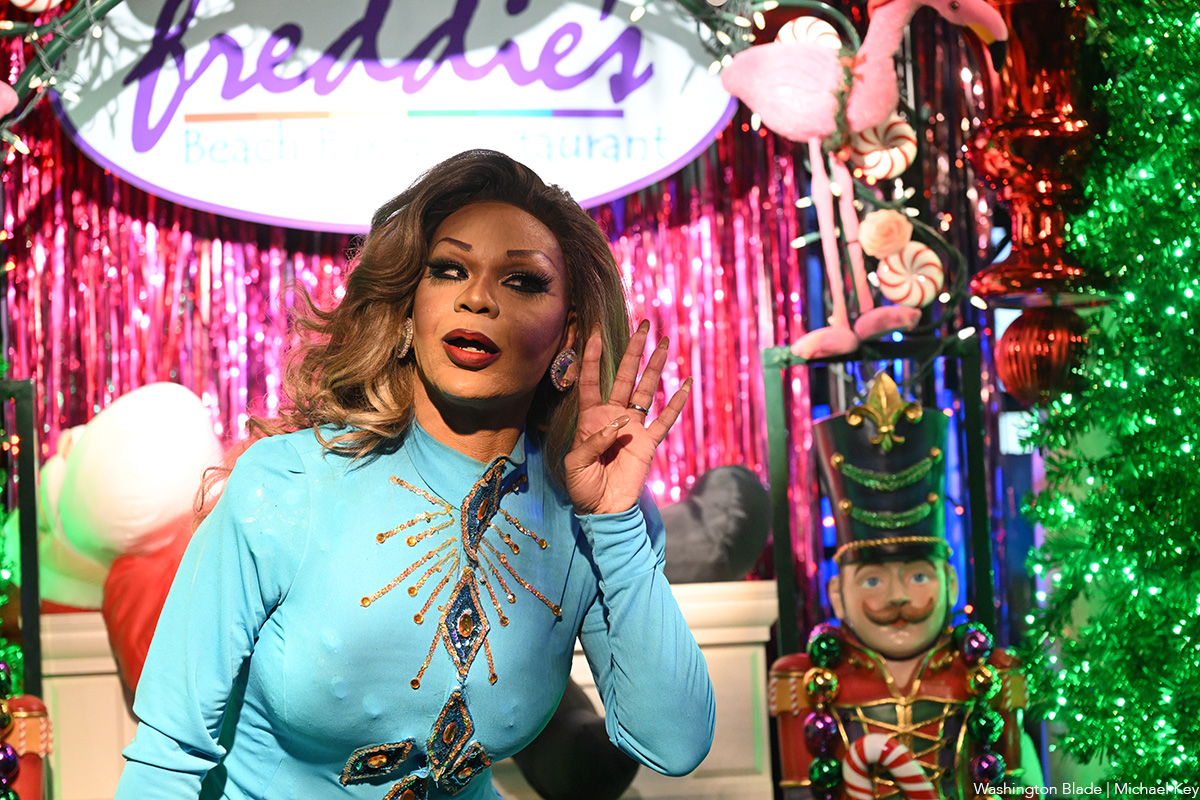






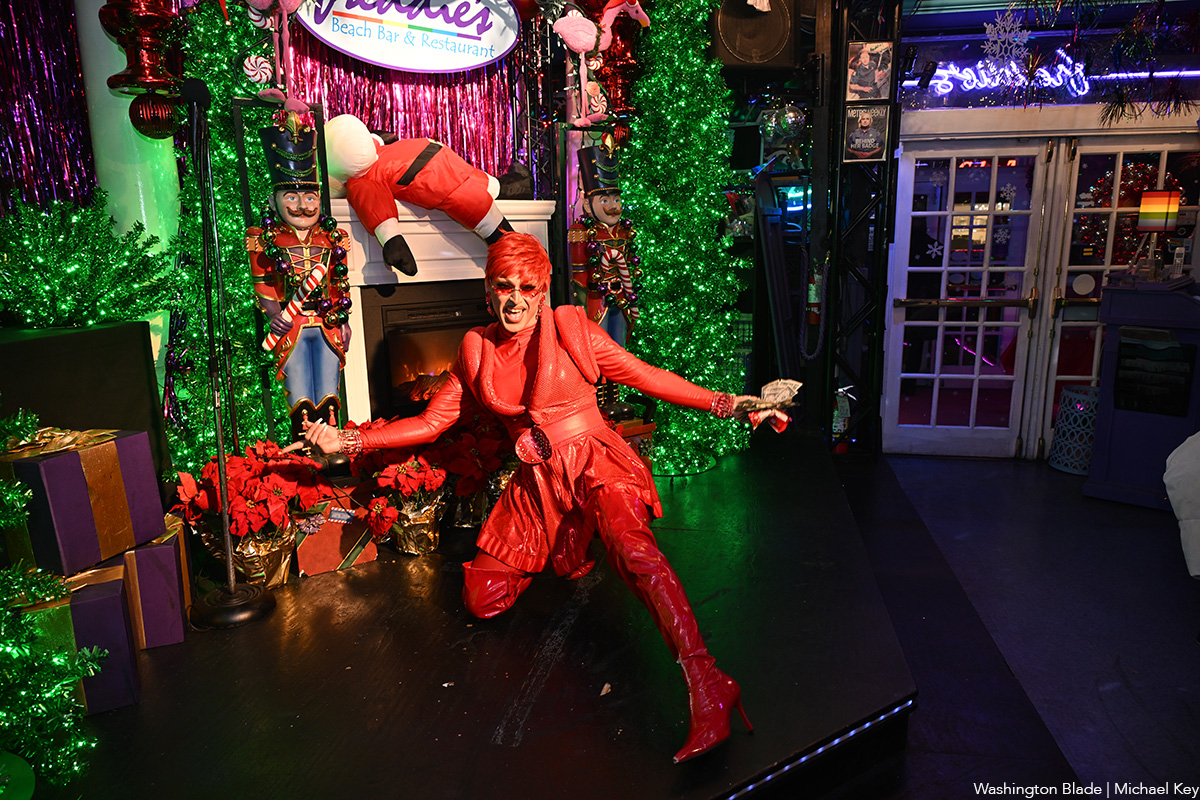

-

 Sponsored5 days ago
Sponsored5 days agoSafer Ways to Pay for Online Performances and Queer Events
-

 District of Columbia4 days ago
District of Columbia4 days agoTwo pioneering gay journalists to speak at Thursday event
-

 Colombia4 days ago
Colombia4 days agoBlade travels to Colombia after U.S. forces seize Maduro in Venezuela
-

 a&e features4 days ago
a&e features4 days agoQueer highlights of the 2026 Critics Choice Awards: Aunt Gladys, that ‘Heated Rivalry’ shoutout and more

